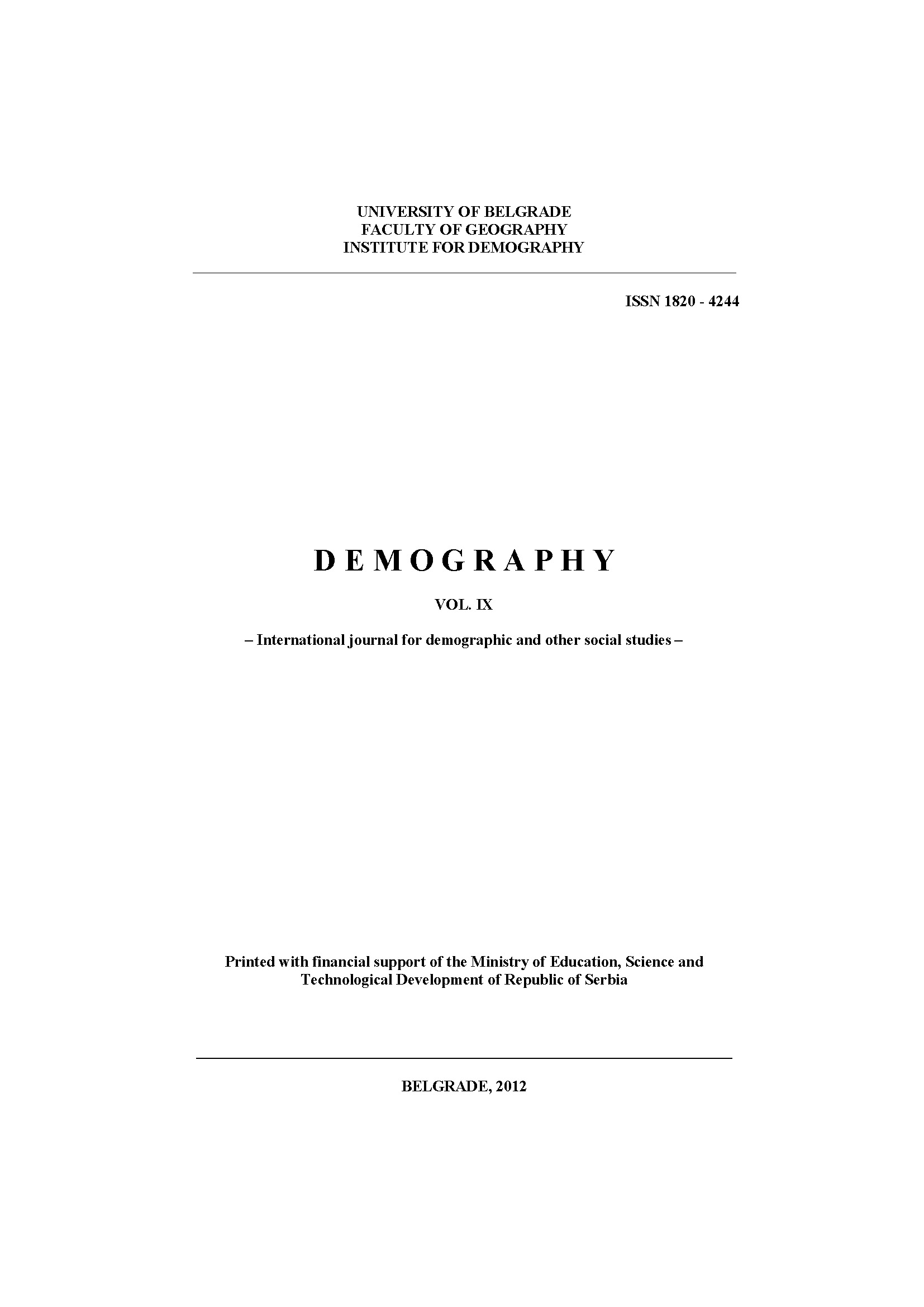Рађање ван брака: неки просторни аспекти
Births Outside Marriage: Some Spatial Aspects
Author(s): Biljana B. Stanković, Goran D. PenevSubject(s): Social Sciences, Gender Studies, Geography, Regional studies, Human Geography, Sociology, Family and social welfare, Demography and human biology, Human Ecology
Published by: Географски факултет, Универзитет у Београду
Keywords: births outside the marriage;spatial differences;Europe;Serbia;
Summary/Abstract: There is a tendency of increase in non-marital childbearing in all European countries during the past several decades. The intensity of the increase, as well as initial level of extra-marital fertility was different, so in actual moment, similar to previous decades, there are great differences among countries. The share of extramarital births is ranking from 7.3% in Greece to 64.3% in Iceland. Serbia (excluding Kosovo) with a share 24.0% is ranked among countries with a lower percentage of extramarital births. Except for the differences on the national level, there are also differences on the level of European regions and smaller territorial units. In Serbia there are two clearly distinguished zones, too - a high share extramarital births zone in the eastern Serbia and low or moderate extramarital births zone in western part of the Central Serbia. Differences on municipality level are considerable also, and in 2011 the highest recorded share (65.9% in Kostolac) was thirteen times higher than the lowest share (5.2% in Ivanjica). Spatial specifities of non-marital fertility by certain characteristics may indicate possible implications for family policy.
Journal: Demografija
- Issue Year: 2012
- Issue No: 9
- Page Range: 181-199
- Page Count: 19
- Language: Serbian

